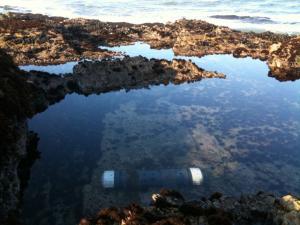Professor explores marine ecosystem's response to ocean acidification
University of Hawaiʻi at MānoaOutreach Coordinator, School of Ocean and Earth Science and Technology
Margaret McManus, (808) 956-8623
Professor, Oceanography
The OMEGAS (Ocean Margin Ecosystems Group for Acidification Studies) Consortium has received a grant of nearly $1.1 million from the National Science Foundation to analyze the ecological and biological responses of marine organisms to ocean acidification in the California Current System.
Margaret McManus, an Oceanography Professor in the UH Manoa School of Ocean and Earth Science and Technology (SOEST), is collaborating with scientists from Oregon State University (Bruce Menge - lead PI for project, Jack Barth, Francis Chan); the University of California Davis (Eric Sanford, Brian Gaylord, Tessa Hill, Ann Russell); Monterey Bay Aquarium Research Institute (Francisco Chavez); University of California Santa Cruz (Pete Raimondi); and University of California Santa Barbara (Gretchen Hofmann, Carol Blanchette, Libe Washburn) on this project.
The researchers will conduct field and laboratory experiments across a network of 10 near-shore ocean acidification monitoring sites that span 1,400 kilometers of the coastline. By combining experiments with a sensor network that will continuously measure ocean pH changes, the researchers will be able to examine the sensitivity and potential resilience to ocean acidification among mussel populations that are spread along the West Coast of the United States.
The researchers will focus much of their attention on a mussel, Mytilus californianus, a widespread component of the rocky intertidal zone and an important test subject for understanding ocean chemistry changes. Their previous research found that the growth, survival and shell strength of the mussel larvae are significantly affected in a negative way by elevated levels of carbon dioxide in the ocean water.

